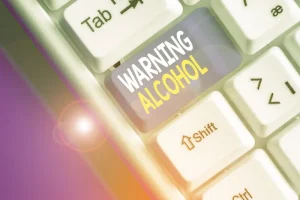Alcohol-Related Neurologic Disease: Types, Signs, Treatment

Top-shelf brands not only taste better but may also be less likely to prove a migraine trigger. I caution patients to order a specific brand of alcohol when ordering a cocktail rather than relying on well drinks or lower-quality brands. It has been noted in some studies that in less than 30 percent of people, red wine triggers headache no matter the number of drinks consumed.
© 2024 Harvard Health Publishing® of The President and Fellows of Harvard College
Distribution of daily alcoholic beverages consumption (total daily quantity and by type of alcoholic drink), for all person‐days, within‐person means, and within‐person SDs. The majority were female (419/487, 86.0%), actively working (293/378, 77.5%). Most of the females had regular menstrual cycles (247/419, 58.9%). Individuals https://ecosoberhouse.com/ reported a mean (SD) of 6.1 (3.3) migraine days per month and 3.7 (1.7) migraine attacks per month. If both stress and alcohol are migraine triggers for you, combining them won’t do you any favors. In addition to this, people are sometimes more likely to drink more when they are feeling stressed and a little reckless.

Why do I get a migraine attack when I drink alcohol?
The alcohols more likely to trigger a migraine attack are dark liquors like bourbon, whiskey or red wine. If you do drink alcohol, it’s important to be mindful of your consumption and to experiment to see what works best for you. Many people find their migraine symptoms are heightened after consuming caffeine or alcohol. Conversely, other people say that a cup of coffee can stop their migraine symptoms, and some medications designed to fight migraine pain may contain a dose of caffeine.
Alcoholic neuropathy
- People can talk with their doctors about possible methods to prevent or ease alcohol-induced headaches.
- People who get migraine attacks during or after drinking should consider reducing or eliminating alcohol.
- Individuals from different ethnic backgrounds may have variable sensitivity to alcohol.
- Note that to qualify as a cocktail (or delayed alcohol-induced) headache, the pain must start within three hours of drinking.
- To learn more about all of your migraine treatment options, visit the AMF Resource Library.
The most common signs and symptoms are stuffy nose and skin flushing. Other neurotransmitters play a role in the pain of migraine, including calcitonin gene-related peptide (CGRP). Migraines might occur rarely or strike several times a month. For some people, an aura might occur before or during migraines. They're usually visual but can also include other disturbances.
Helpful Resources

Your chances for recovery depend on how early the disease is diagnosed and how much damage has already occurred. Avoiding alcohol is the best way to treat these conditions and relieve symptoms. The earlier you stop intake, the more likely you are to recover. Optic neuropathy can also develop as a result of accidental methanol poisoning. Methanol is used in some hand sanitizers instead of ethyl alcohol. In some cases, methanol poisoning can occur as a result of drinking homemade alcohol or moonshine.

Is Alcohol Consumption a Trigger for Migraine?
Unfortunately, nothing can prevent reactions to alcohol or ingredients in alcoholic beverages. To avoid a reaction, avoid alcohol or the particular substance that causes your reaction. Rarely, severe pain after drinking alcohol is a sign of a more serious disorder, such as Hodgkin's lymphoma. Alcohol intolerance can cause immediate, uncomfortable reactions after you drink alcohol.
The only way to prevent these uncomfortable reactions is to avoid alcohol. Medication-overuse headaches occur when medications stop relieving pain and begin to cause headaches. You then use more pain medication, which continues the cycle. Though migraine causes aren't fully understood, genetics and environmental factors appear to play a role.

Moreover, people who drink alcohol may not drink as much water, intensifying the water loss. It may also trigger headaches related to headache disorders, such as migraine. A 2016 review notes that alcohol may trigger a tension headache, especially if a person also has migraine. The research found that 21% of people with migraine say that alcohol is a tension headache trigger, compared with just 2% of people without migraine.
Here is the advice of one wine expert
If you're someone that drinks a lot of coffee, you may experience a withdrawal headache when you miss your usual cup. Withdrawal headaches that you feel in the afternoon can be a direct result of your body noticing it hasn't received its usual dose of caffeine. Secondary headaches are related to a medical condition such as alcohol and headaches head injury, high blood pressure, infection, trauma, and tumor. Side effects of medication or substance withdrawal can also trigger headaches. Excessive consumption of alcohol causes alcohol-related neurologic disease. When you consume alcohol, it’s absorbed into your bloodstream from the stomach and the small intestine.
- A migraine is headache with other symptoms such as sensitivity to light and sound, nausea, vomiting, aura and more.
- Studies show that many people with migraine choose not to drink alcohol for fear that it may trigger a migraine attack.
- Our Move Against Migraine support group is a place for you to connect with others (via Facebook) who live with migraine to exchange stories and find community and support.
- Don’t give up on your search to find an integrative treatment that works for you.
- Afternoon headaches can often be triggered by something that occurred during the day, such as muscle tension, drinking too much coffee, or skipping lunch.

